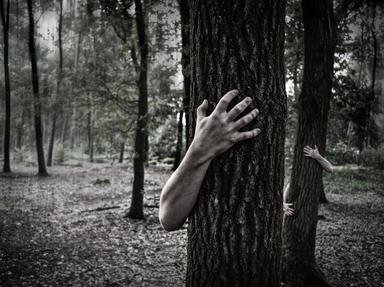Quiz Answer Key and Fun Facts
1. By almost any reckoning, the most influential vampire movie of all time was Universal Studios' "Dracula", from 1931. From innumerable remakes, to the Count character on "Sesame Street", this film cast the mold for how a vampire was supposed to look, sound, and act. Who played the title role in this groundbreaking work?
2. Sexuality and passion have always been prominent in the vampire mythos, and this 1983 film starring Catherine Deneuve and Susan Sarandon is no exception. Based on a novel by Whitley Streiber, what is the name of this movie that continues to raise eyebrows?
3. When making "Dracula" in 1931, Universal Studios experimented with an alternative to foreign language dubbing: when the English-speaking cast went home for the night, a Spanish-speaking cast would take over, filming their own movie on the very same sets. The two films are similar, but the Spanish version (directed by George Melford) differs from the English in many ways. Which of these is NOT a substantial difference between the two versions?
4. Starring cult-film mainstay Barbara Steele as a Russian witch who is executed in 1630 - only to return for bloody vengence 200 years later - this 1960 picture was banned in the UK for eight years due to its graphic imagery and subject matter. What was this controversial amalgamation of fantastic imagery directed by Italian legend Mario Bava?
5. The announcement that Tom Cruise would play the iconic Lestat in this 1994 production provoked howls of protest from novelist Anne Rice's legion of fans. When the film came out, however, many afficionados gave the devil his due: along with co-stars Brad Pitt, Kirsten Dunst, Antonio Banderas, Stephen Rae, and Christian Slater, Cruise turned in a fine performance. What Neil Jordan-directed film garnered such impassioned debate among the faithful?
6. In the late 1950s, minor British studio Hammer Films revitalized the horror genre, producing lush costume dramas that made use of Technicolor stock and relaxed censorship standards in depicting overt bloodshed and sexuality. Their take on "Dracula" (titled "Horror of Dracula" in the US) saw what imposing actor breathe new life into the undead nobleman?
7. Starring Lili Taylor as a philosophy graduate student, vampirized by the beautiful Annabella Sciorra, this 1995 Abel Ferrara film drives home the intriguing thesis that victims assent to their violation by lacking the courage to refuse. What is this black and white picture, highlighted by the musings of the great Christopher Walken as a self-actualized elder vampire?
8. In the 1940s, RKO pictures commissioned Val Lewton to create a series of cheap, profitable pictures around a line of lurid titles. In Lewton's capable hands, however, films like "Cat People", "The Body Snatcher", and "I Walked with a Zombie" transcended their genre. Which of these was the vampiric entry in Lewton's ouvre, starring the great Boris Karloff?
9. 2008 saw a filmic event that sounds like an oxymoron: a great Swedish vampire movie. What is the English title of this darkly charming picture?
10. Poet Allen Ginsberg was notorious for his dictum "first thought, best thought" extolling the virtues of spontaneity and originality over revision and precision. To an extent, this axiom may apply to vampire films - the first major work of the genre is still felt by a plurality of critics to be the best vampire movie ever made. What was this 1922 classic that made the Vatican's short list of recommended films in 1995?
Source: Author
stuthehistoryguy
This quiz was reviewed by FunTrivia editor
skunkee before going online.
Any errors found in FunTrivia content are routinely corrected through our feedback system.


